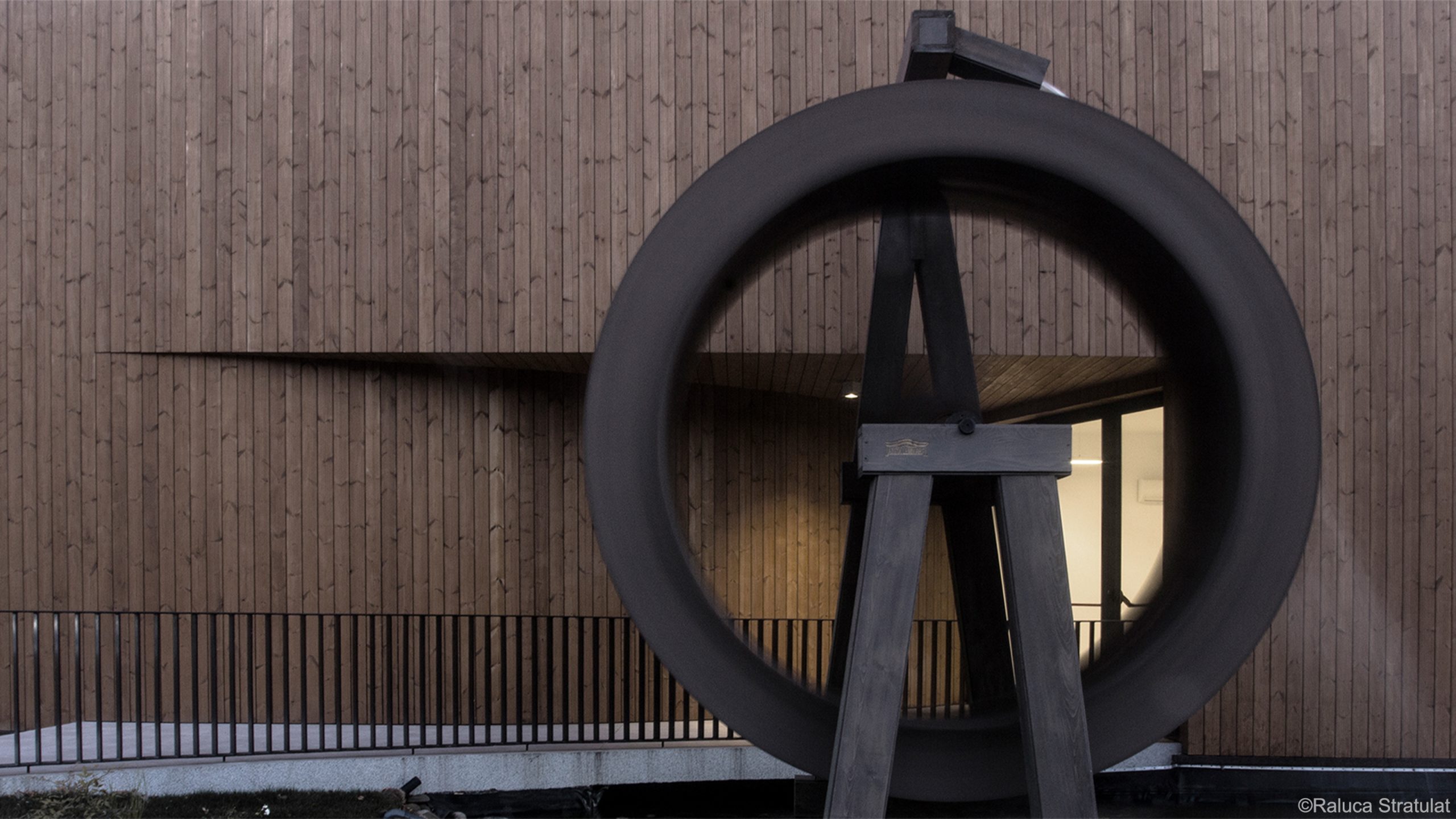It was decided that what was left unbuilt would instead be green, an outdoor space dedicated to the residents, “like a park, but tempered and modest”, a garden.Another notable aspect of our approach was the importance that local administration placed on an abandoned infrastructure element that happened to be related to our studied lot, an abandoned irrigation canal from the 18th century. At one point in time it sustained local urban life, hosting a number of activities along its path. This strong reference to the town’s history appeared as a compelling reason to attract visitors and get them to participate and reveal curiosity and interest in the space which now stands as a witness to lost traditions. The idea of water was brought to the surface in long, organic shapes, devoid of pretentious geometries, much like the stream of water that used to pass there. The last and perhaps most insignificant element of the whole ensemble was the built part, the building itself. The building servea as a resting stop and a place to showcase the project’s story that brings people together here.

